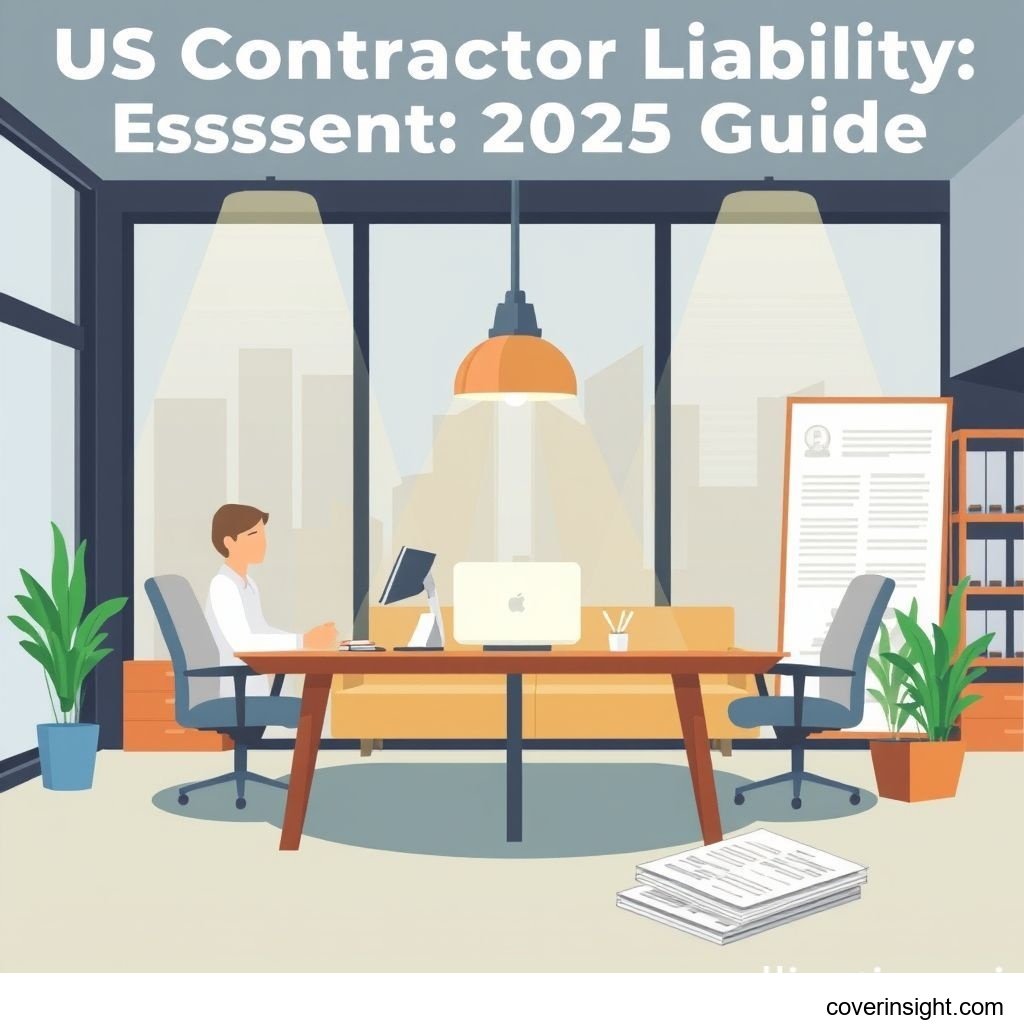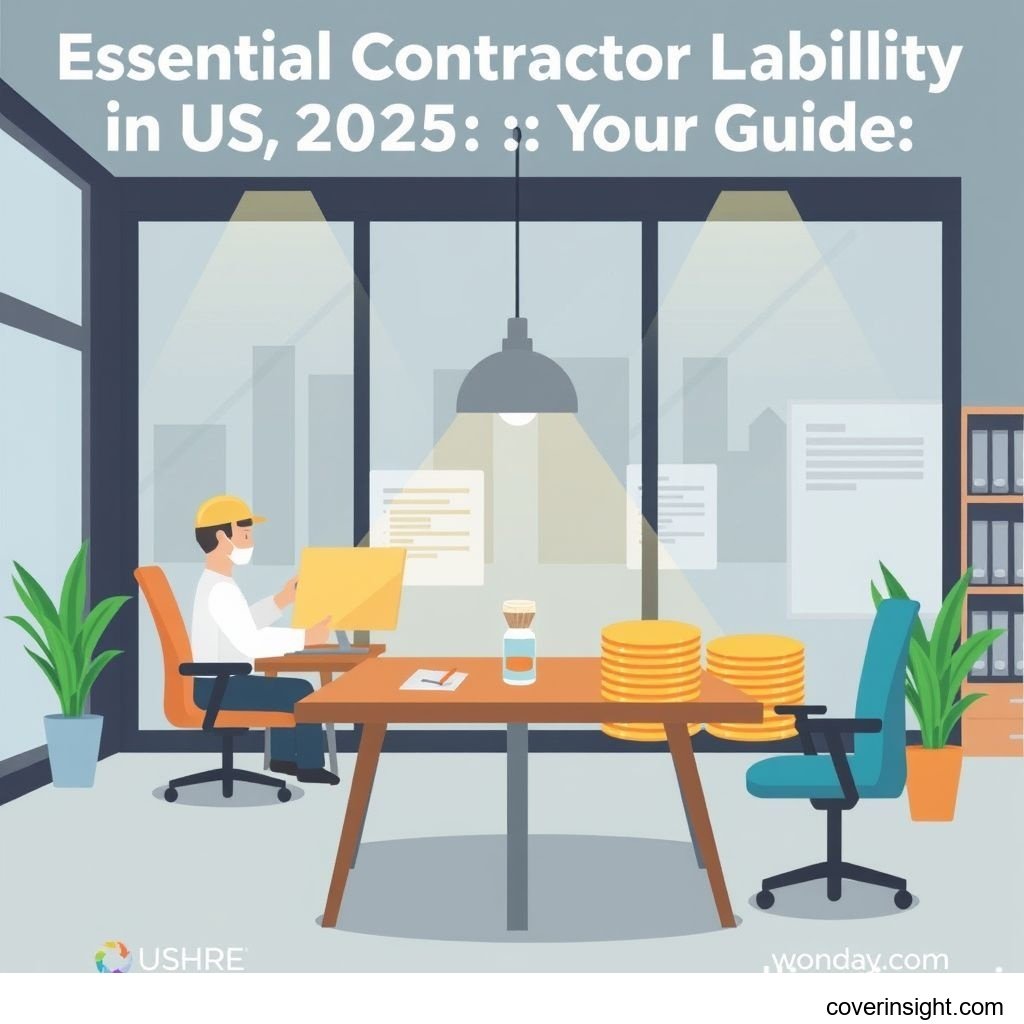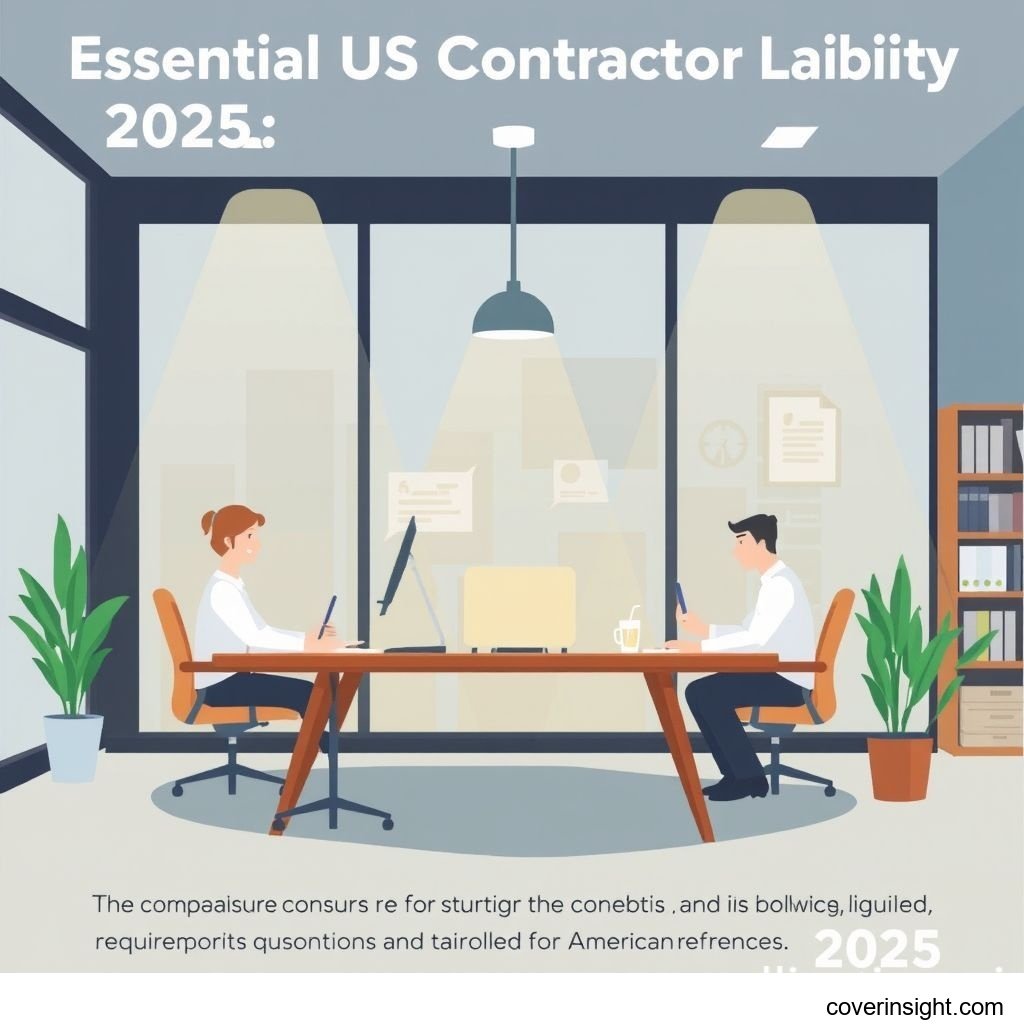US Contractor Liability: Essential 2025 Guide
Introduction
As 2025 unfolds, the landscape of contractor liability requirements in the US continues to evolve, making it more critical than ever for businesses and independent contractors alike to understand their obligations. Navigating these requirements isn't just about compliance; it's a fundamental safeguard for your business, protecting you from potentially crippling financial losses due to accidents, errors, or omissions. From unexpected property damage on a job site to third-party injuries, adequate liability coverage is the bedrock of a secure operation, allowing you to focus on your craft rather than unforeseen risks.
Coverage Details
Understanding what’s typically covered and what might be excluded is paramount to ensuring you're adequately protected.
What’s Included
Most contractor liability policies are built around Commercial General Liability (CGL), which serves as your primary defense. This typically covers:
-
Bodily Injury: If a non-employee is injured on your property or as a result of your operations. For example, a client trips over your tools at their home and breaks an arm.
-
Property Damage: If your work causes damage to a client's property or that of a third party. Imagine a dropped tool smashing a window or an accidental spill damaging flooring.
-
Personal and Advertising Injury: This covers claims like libel, slander, copyright infringement in your advertising, or false arrest. While less common for contractors, it's a crucial layer of protection.
-
Products-Completed Operations: This is vital for contractors. It covers damage or injury that occurs after your work is completed and accepted by the client. For instance, if a deck you built collapses months later, causing injury, this coverage would kick in.
Depending on your specialty, you might also need:
-
Professional Liability (Errors & Omissions - E&O): For contractors offering design or consulting services, this covers financial losses due to professional negligence, mistakes, or inadequate advice.
-
Workers' Compensation: Mandatory in most states if you have employees, this covers medical expenses and lost wages for employees injured on the job. The U.S. Bureau of Labor Statistics reported over 2.8 million non-fatal workplace injuries and illnesses in private industry in 2022, underscoring the constant need for this coverage.
-
Commercial Auto Insurance: If you use vehicles for business, this covers accidents involving those vehicles.
Common Exclusions
While comprehensive, liability policies aren't a blank check. Common exclusions often include:
-
Intentional Acts: Damage or injury caused by deliberate actions, not accidents.
-
Employee Injuries: These are typically covered by Workers' Compensation, not general liability.
-
Damage to Your Own Property: Your general liability policy doesn't cover damage to your own tools, equipment, or business premises. This requires separate commercial property insurance.
-
Professional Services: Unless you have a specific E&O policy, general liability won't cover claims arising from professional errors or omissions.
-
Pollution or Contamination: Most standard policies exclude claims related to pollution. Special environmental liability insurance is needed for such risks.
-
Punitive Damages: While policies may cover compensatory damages, punitive damages (designed to punish the defendant) are often excluded.
Cost Analysis
The cost of contractor liability insurance can vary significantly, making it essential to understand the influencing factors and how to manage them.
Price Factors
-
Type of Work/Industry Risk: A roofer or demolition expert will naturally face higher premiums than a graphic designer or a house painter due to the inherent risks involved. High-risk trades translate to higher costs.
-
Location: Insurance rates can vary by state, county, and even city, influenced by local regulations, claim frequency, and population density. For instance, a contractor operating in a bustling urban center might pay more than one in a rural area.
-
Coverage Limits and Deductibles: Choosing higher coverage limits (e.g., $2 million instead of $1 million) will increase your premium. Conversely, opting for a higher deductible (the amount you pay out-of-pocket before insurance kicks in) can lower your premium.
-
Claims History: A history of previous claims will almost certainly lead to higher premiums, as insurers view you as a higher risk.
-
Business Size and Revenue: Larger businesses with more employees and higher revenues generally face higher premiums due to increased exposure to risk.
-
Years in Business: Established businesses with a clean track record often receive better rates than new ventures, as they demonstrate stability and experience.
Saving Tips
-
Bundle Policies: Many insurers offer discounts when you bundle multiple policies, such as general liability with commercial auto or property insurance.
-
Implement Risk Management: Proactively implement safety protocols, regular employee training, and quality control measures. Fewer accidents mean fewer claims, which can lead to lower premiums over time.
-
Increase Your Deductible: If you have the financial reserves, accepting a higher deductible can significantly reduce your monthly or annual premium.
-
Shop Around: Don't settle for the first quote you receive. Obtain quotes from multiple reputable insurers. Organizations like the National Association of Insurance Commissioners can be a good starting point for understanding industry standards, and your State Insurance Departments often provide lists of licensed insurers.
-
Maintain a Clean Claims History: This is perhaps the most impactful tip. Avoiding claims through careful work and strong safety practices will keep your premiums low in the long run.
FAQs
How much does contractor liability requirements cost?
The cost of contractor liability insurance varies widely, typically ranging from a few hundred dollars to several thousand dollars per year. A small, low-risk contractor might pay $400-$700 annually for general liability, while a larger, high-risk construction company could pay upwards of $5,000-$10,000+. It truly depends on the factors mentioned in the "Price Factors" section.
What affects premiums?
Premiums are primarily affected by the type of work performed (risk level), business location, desired coverage limits and deductibles, your claims history, the size of your business, and your time in the industry. The more risk an insurer perceives, the higher your premium will be.
Is it mandatory?
While federal law doesn't mandate general liability insurance for all contractors, many states and local jurisdictions do require it, especially for certain licenses or permits. More importantly, nearly all clients, both residential and commercial, will require you to carry adequate liability insurance before they'll sign a contract. It's often non-negotiable for securing jobs. Think of it this way: if you're not covered, you're essentially walking a tightrope without a net.
How to choose?
Choosing the right policy involves assessing your specific risks, understanding the types of projects you undertake, and determining appropriate coverage limits. It's wise to consult with an experienced insurance broker who specializes in contractor policies. They can help you tailor a policy that fits your needs without breaking the bank. For more comprehensive insights, consider exploring general Insurance Resources Global or delving into specifics at US Insurance Home.
Consequences of no coverage?
Operating without adequate contractor liability coverage is akin to playing with fire. The consequences can be severe:
-
Financial Ruin: A single lawsuit from a job site accident or property damage claim can lead to massive out-of-pocket expenses for legal fees, medical bills, and repairs, potentially bankrupting your business. Consider the real-world example of "Builder's Blunder Inc." in Texas. A subcontractor, while installing plumbing, accidentally caused a pipe to burst, leading to significant water damage to a client's newly finished basement. Because Builder's Blunder Inc. had comprehensive general liability coverage, their insurer covered the substantial repair costs, preventing a major financial hit and potential lawsuit that could have crippled the business. Without it, they'd have been left holding the bag, potentially facing bankruptcy.
-
Loss of Clients: Most reputable clients will not hire an uninsured contractor, as it exposes them to unnecessary risk. You'll miss out on valuable job opportunities.
-
Legal Penalties: If insurance is legally required in your jurisdiction, operating without it can result in hefty fines, license suspension, or even criminal charges.
-
Reputational Damage: Word travels fast in the contracting world. A reputation for being uninsured or irresponsible can permanently damage your business's standing.
Author Insight & Experience:
Based on my experience working with contractors across various states, the biggest mistake I've seen isn't necessarily cutting corners on the job, but rather cutting corners on insurance. It’s easy to view premiums as just another expense, but I've personally witnessed businesses, even those with years of solid work, crumble overnight because one unforeseen incident hit them when they were uninsured or underinsured. It's not just about protecting your assets; it's about safeguarding your peace of mind and the future of your livelihood. In the US, where litigation is common, a robust liability policy isn't a luxury; it's a strategic necessity.








Comments